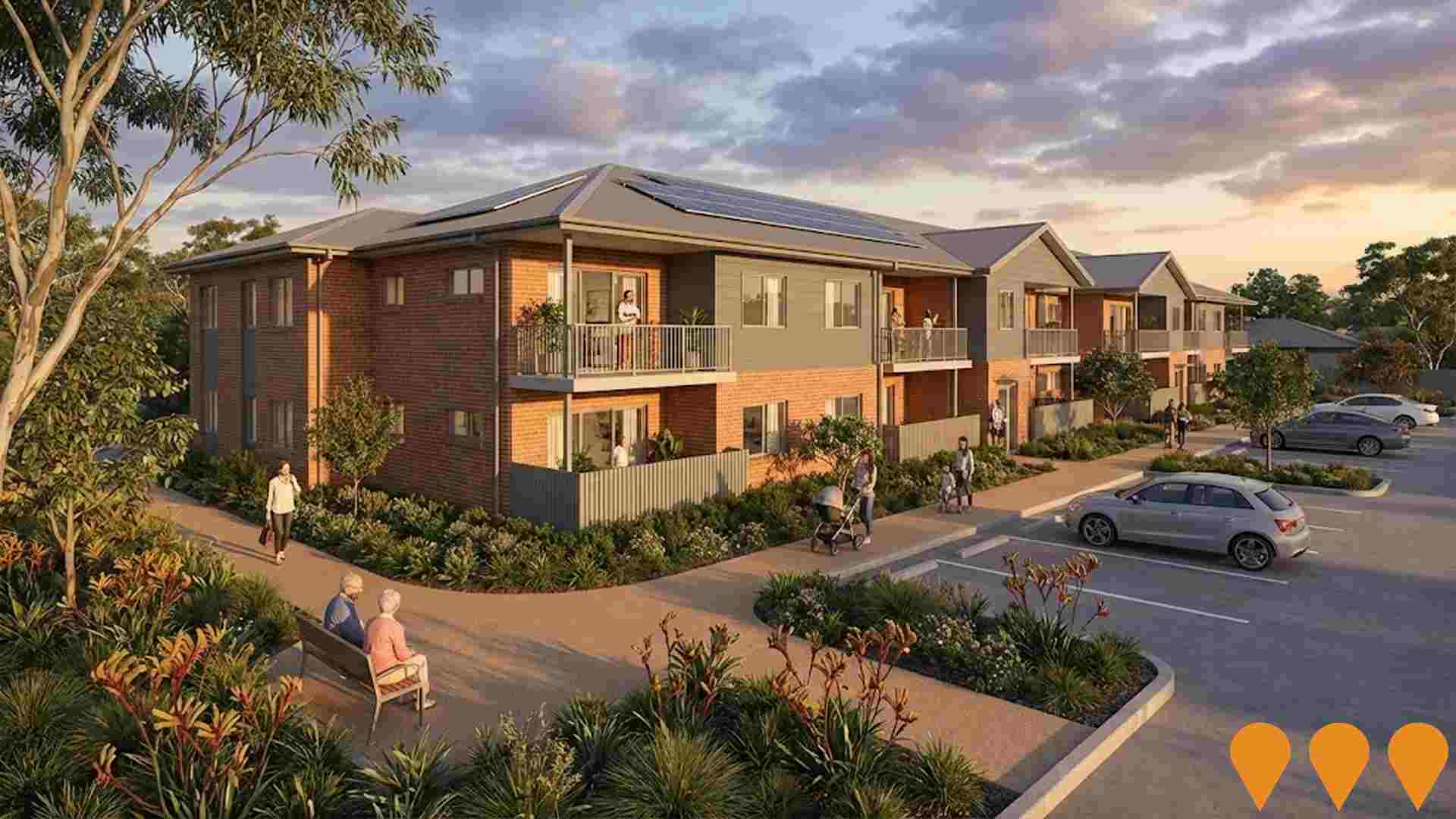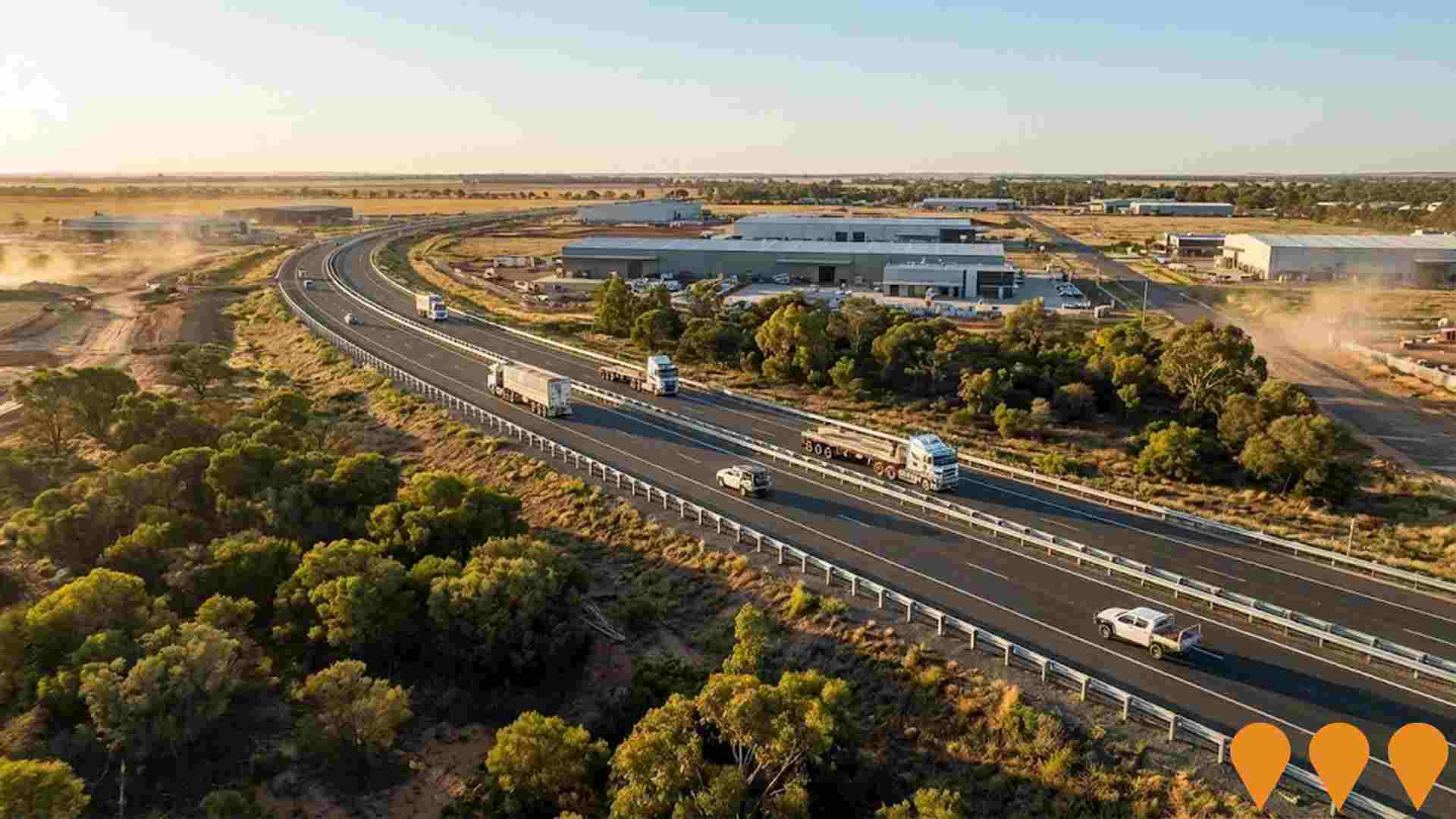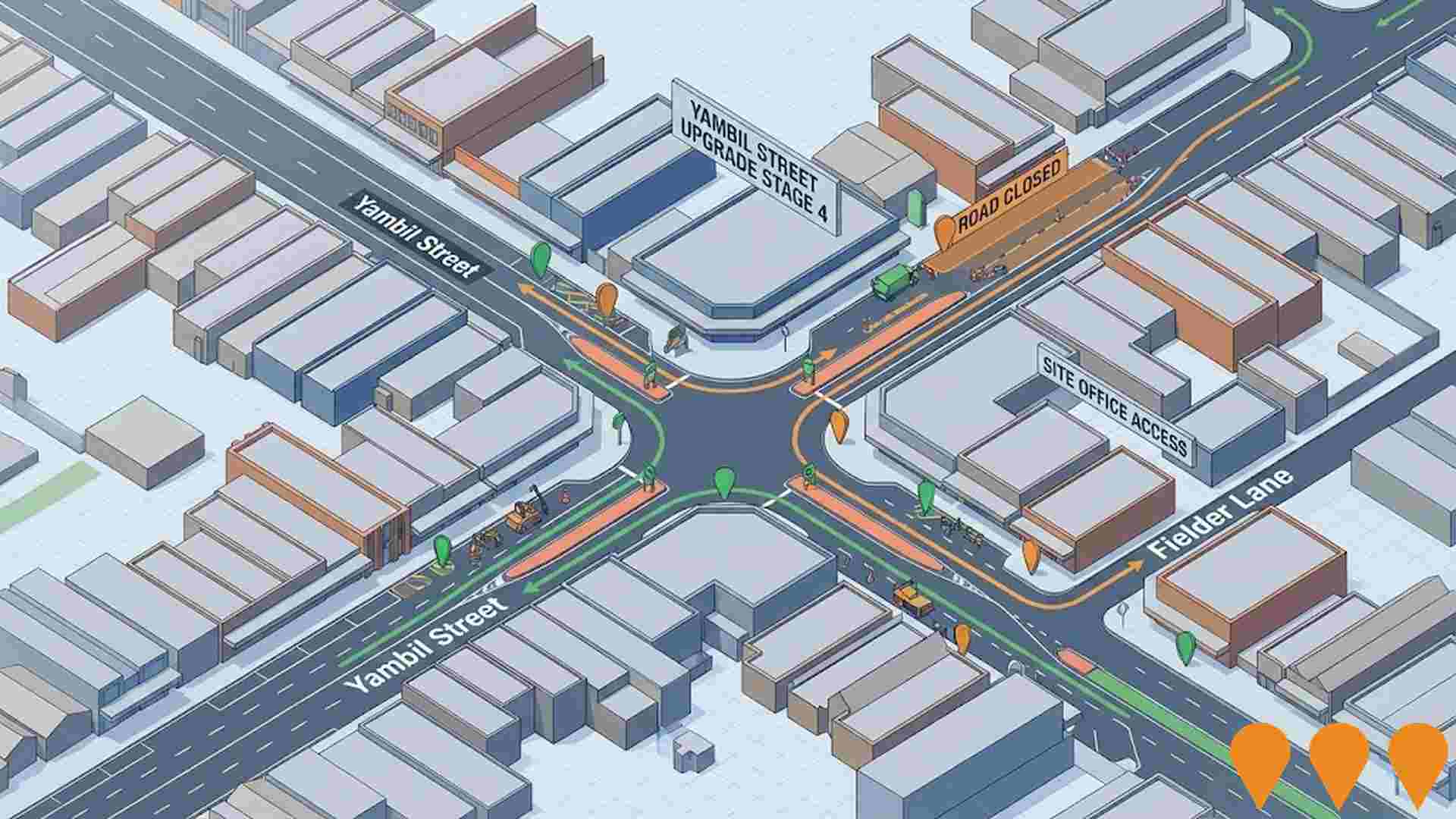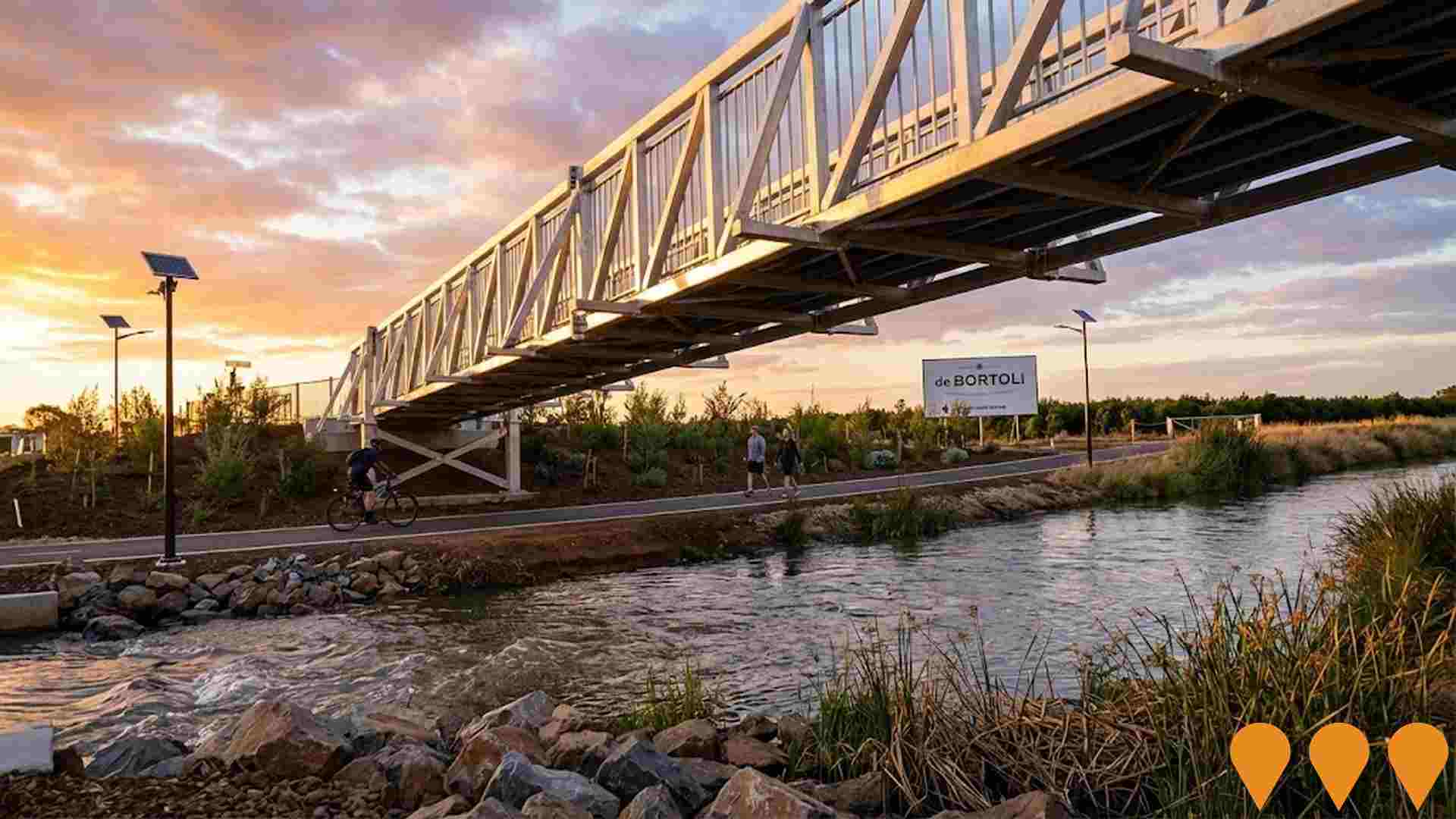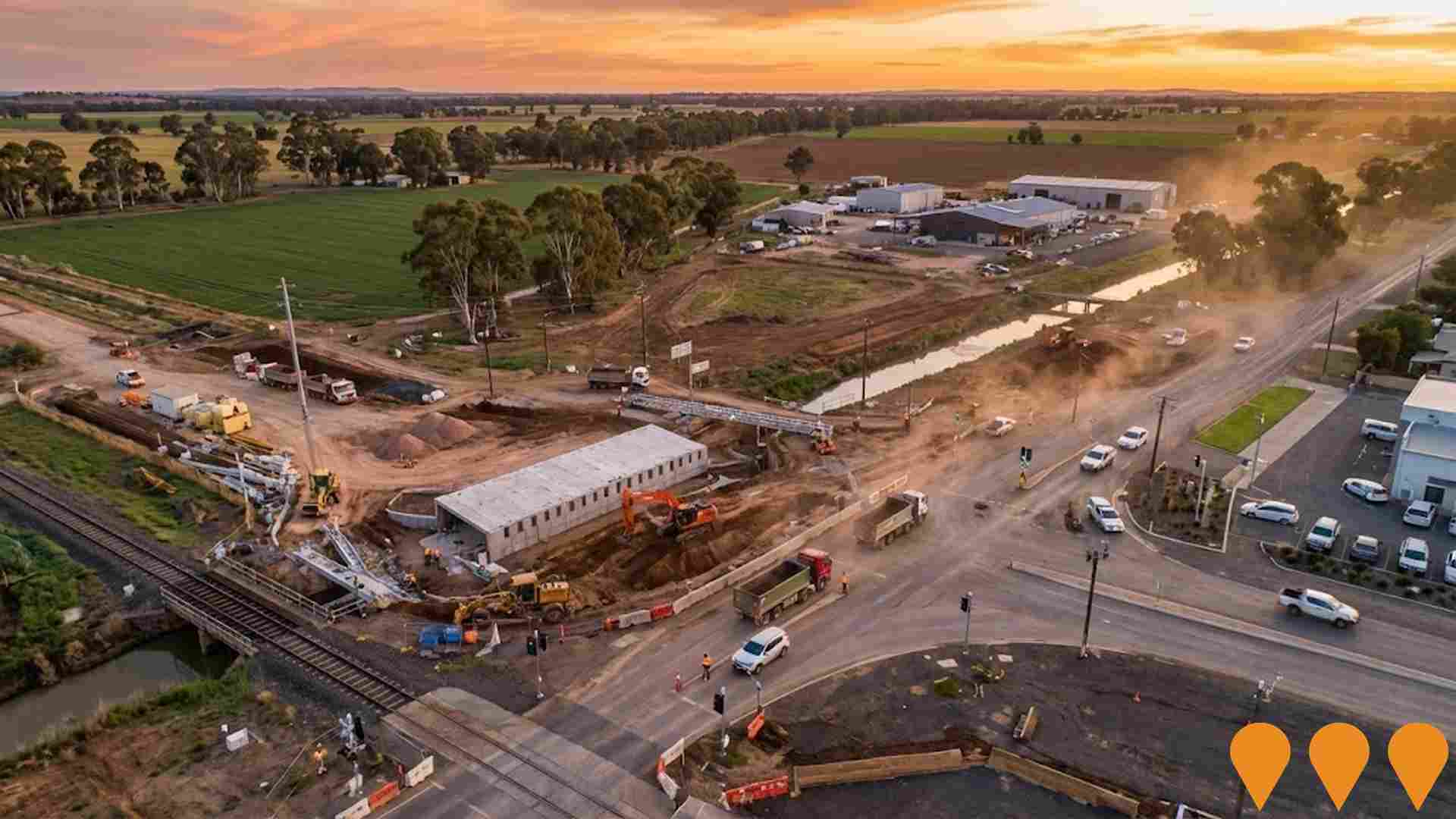Chart Color Schemes
est. as @ -- *
ABS ERP | -- people | --
2021 Census | -- people
Sales Activity
Curious about local property values? Filter the chart to assess the volume and appreciation (including resales) trends and regional comparisons, or scroll to the map below view this information at an individual property level.
Find a Recent Sale
Sales Detail
Population
Population growth drivers in Griffith are strong compared to national averages based on AreaSearch's ranking of recent, and medium to long-term trends
Griffith NSW's population was approximately 21,996 as of November 2025. This figure represents an increase of 1,427 people, a 6.9% rise from the 2021 Census which recorded a population of 20,569. The change is inferred from the estimated resident population of 20,704 in June 2024 and an additional 701 validated new addresses since the Census date. This results in a population density of 390 persons per square kilometer. Griffith's growth rate exceeded that of its SA4 region (4.1%) and non-metro areas. Overseas migration contributed approximately 65.7% of overall population gains recently.
AreaSearch uses ABS/Geoscience Australia projections for each SA2 area, released in 2024 with a base year of 2022. For areas not covered by this data, NSW State Government's SA2 level projections released in 2022 with a base year of 2021 are used. Growth rates by age group from these aggregations are applied to all areas for years 2032 to 2041. Future population trends project an above median growth for locations outside capital cities, with Griffith expected to increase by 3,022 persons to 2041, a total gain of 7.8% over the 17-year period.
Frequently Asked Questions - Population
Development
AreaSearch assessment of residential approval activity sees Griffith among the top 30% of areas assessed nationwide
Griffith has recorded approximately 139 residential properties granted approval per year over the past five financial years, totalling 698 homes. In FY26 so far, 56 approvals have been recorded. On average, 0.3 people per year moved to the area for each dwelling built between FY21 and FY25. The average construction cost value of new homes was $308,000.
This financial year has seen $112.5 million in commercial approvals registered, indicating strong commercial development momentum. Compared to the Rest of NSW, Griffith has 74.0% more construction activity per person. New building activity comprises 76.0% standalone homes and 24.0% medium and high-density housing, preserving the area's low density nature. There are approximately 131 people per dwelling approval in the location, indicating an expanding market.
Population forecasts suggest Griffith will gain 1,716 residents by 2041. Based on current development patterns, new housing supply should readily meet demand, offering good conditions for buyers and potentially facilitating population growth beyond current projections.
Frequently Asked Questions - Development
Infrastructure
Griffith has emerging levels of nearby infrastructure activity, ranking in the 30thth percentile nationally
The performance of an area is significantly influenced by changes to local infrastructure, major projects, and planning initiatives. AreaSearch has identified a total of twenty projects that are expected to impact the area. Notable projects include the Griffith Base Hospital Redevelopment, Griffith Hill Lifestyle Estate, Yambil Street Upgrade Stage 4, and Wakaden Street Affordable Townhouses. The following list details those projects likely to be most relevant.
Professional plan users can use the search below to filter and access additional projects.
INFRASTRUCTURE SEARCH
 Denotes AI-based impression for illustrative purposes only, not to be taken as definitive under any circumstances. Please follow links and conduct other investigations from the project's source for actual imagery. Developers and project owners wishing us to use original imagery please Contact Us and we will do so.
Denotes AI-based impression for illustrative purposes only, not to be taken as definitive under any circumstances. Please follow links and conduct other investigations from the project's source for actual imagery. Developers and project owners wishing us to use original imagery please Contact Us and we will do so.
Frequently Asked Questions - Infrastructure
Griffith Base Hospital Redevelopment
NSW Government's $250 million redevelopment of Griffith Base Hospital. Construction of the new Clinical Services Building, the centrepiece of the redevelopment, is complete and the new hospital opened to patients and visitors on Thursday 26 June 2025. The project includes a new three-storey Clinical Services Building featuring an Emergency Department, operating theatres, medical imaging, aged care and rehabilitation beds, and expanded ambulatory care services. Remaining works, including demolition of old buildings, car parking, and landscaping, will continue in late 2025 and 2026. The overall redevelopment is scheduled for completion in 2026.

Kooyoo Street Plaza Redevelopment
Transformation of Kooyoo Street into an urban plaza suitable for cultural events, markets and festivals. The project includes street trees, seating, pedestrian improvements, power infrastructure for kiosks and food vans, smart lighting, water stations, bollards, and reduced speed limits. Stage 1 (Banna Avenue to Banna Lane) creates a pedestrian-friendly paved area with no kerbs, while maintaining one-way vehicle access. The plaza successfully hosts community events including the annual Punjabi Mela festival.

Griffith Mountain Bike Track
A 4.5km mountain bike track with a skills area, shelter, fences and car park designed for riders of all levels. Stage 1 officially opened 30 May 2024 following extensive community consultation. The facility provides an inclusive public playspace with tracks, roll over and kicker ramps to promote active lifestyles and enhance public spaces.

Griffith Hill Lifestyle Estate
An over-50s land lease community featuring 186 modern low-maintenance homes across four stages. The estate offers resort-style amenities including a state-of-the-art clubhouse with dining areas, theatrette, library, and games room. A separate wellness centre will feature a heated pool, gym, pickleball courts, bowling green, and community garden. First residents moved in October 2024, with wellness centre opening late 2025 and main clubhouse commencing early 2026.
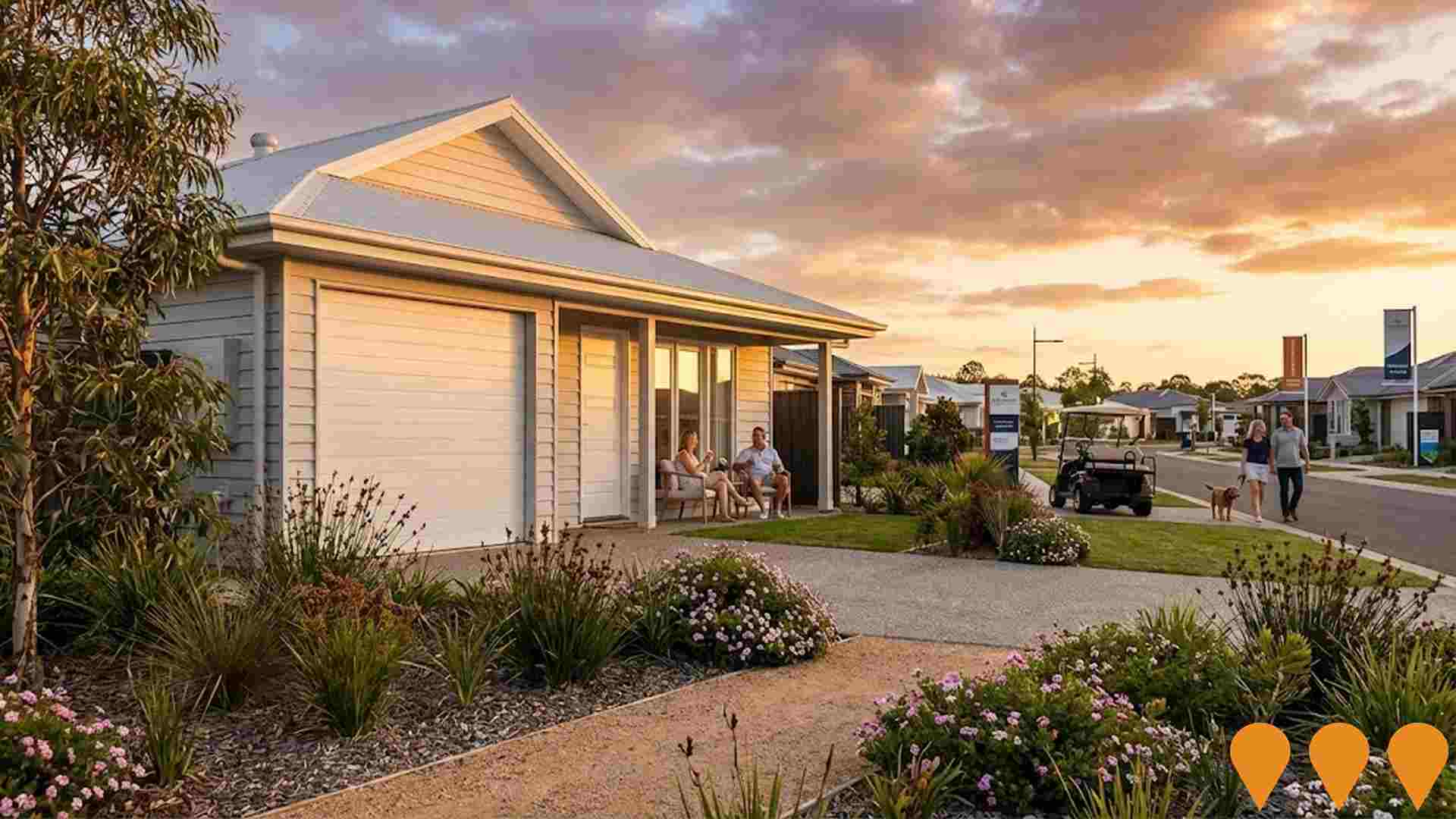
Yoogali Levee Construction
Flood protection infrastructure project for the Yoogali area to protect residential and commercial properties from flood events along the Murrumbidgee River system.
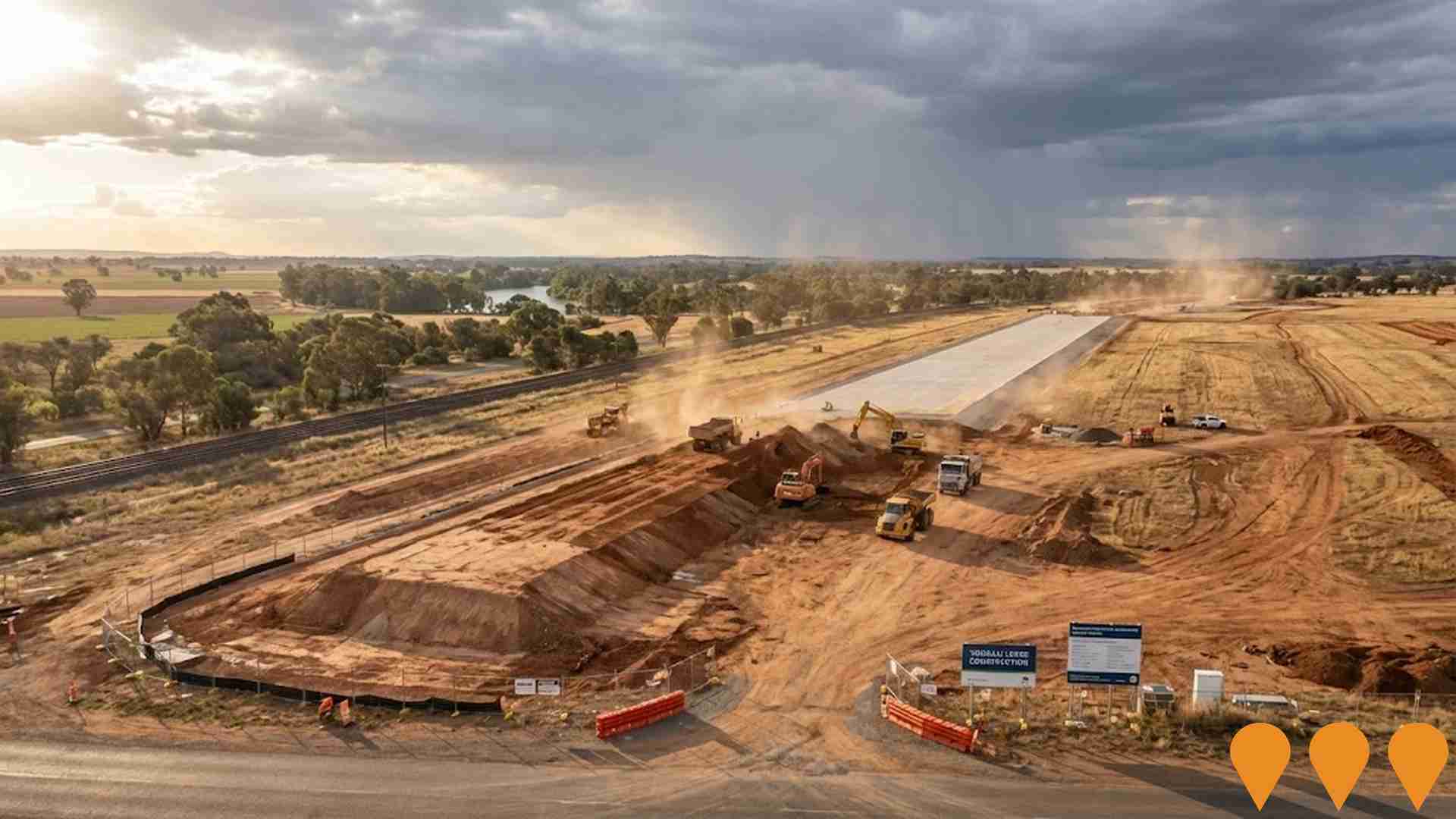
Griffin Green Housing Project
Innovative affordable housing development featuring 20 townhouses and 42 build-ready lots designed specifically for key workers including teachers, police officers, nurses, paramedics, and emergency services personnel. The $12 million project includes a Community Hub, central green space, basketball court with Aboriginal artwork by local artist Karissa Undy, playground, and Dave Taylor Park redevelopment. This partnership between Griffith City Council and Argyle Housing addresses the critical housing shortage in Griffith while creating a supportive community environment.

Favell Street Commercial Development
Construction of Five (5) Commercial Tenancies to be used for Specialised Retail Premises and Warehousing. The development comprises mixed-use commercial facilities in Griffith's established industrial area, providing modern warehouse and retail premises for local businesses.
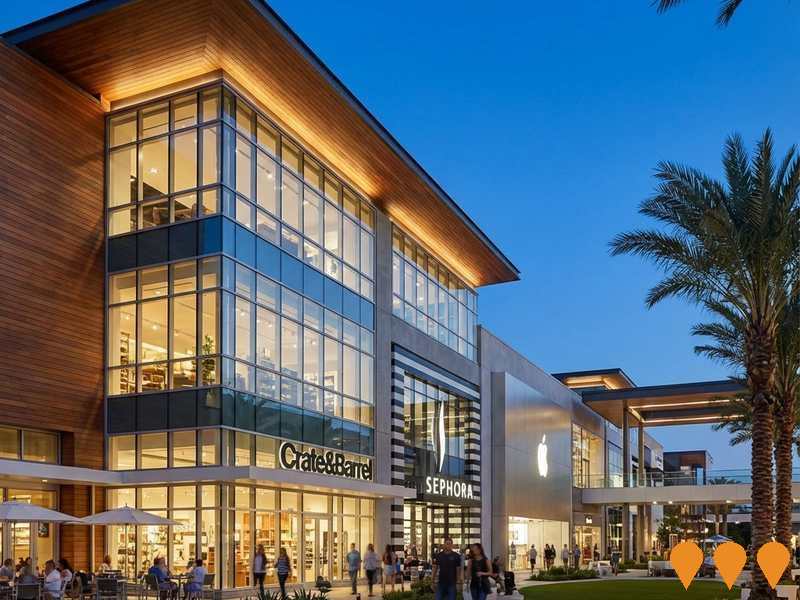
Kurrajong Avenue Upgrade
Stage 3 of the Griffith Southern Industrial Link (GSIL) involving road rehabilitation, widening and critical drainage upgrades on Kurrajong Avenue between Oakes Road and Bagtown Roundabout. Part of a major infrastructure upgrade to deliver a dedicated Heavy Vehicle Route, keeping large trucks out of the CBD and residential areas. Funded under the Australian Government's Roads to Recovery Program.

Employment
Employment conditions in Griffith demonstrate strong performance, ranking among the top 35% of areas assessed nationally
Griffith NSW has a skilled workforce with strong manufacturing and industrial sectors. Its unemployment rate is 3.0% and it experienced an estimated employment growth of 7.8% in the past year.
As of June 2025, 11,003 residents are employed, with an unemployment rate of 3.0%, which is 0.7% lower than Rest of NSW's rate of 3.7%. Workforce participation in Griffith is 64.2%, compared to Rest of NSW's 56.4%. The dominant employment sectors among residents include manufacturing, health care & social assistance, and retail trade. Manufacturing has a particularly high presence with an employment share of 3.6 times the regional level, while health care & social assistance has limited presence at 12.9% compared to the regional figure of 16.9%.
Employment levels increased by 7.8% in Griffith during the year to June 2025, with labour force increasing by 8.8%, causing the unemployment rate to rise by 1.0 percentage points. In comparison, Rest of NSW recorded an employment decline of 0.1%, labour force growth of 0.3%, and an increase in unemployment of 0.4 percentage points. National employment forecasts from Jobs and Skills Australia, issued in May 2025, project national employment growth of 6.6% over five years and 13.7% over ten years. Applying these projections to Griffith's employment mix suggests local growth of approximately 4.9% over five years and 11.5% over ten years.
Frequently Asked Questions - Employment
Income
The area's income profile falls below national averages based on AreaSearch analysis
In financial year 2022, Griffith's median income among taxpayers was $51,341 with an average of $58,989. This is lower than the national average. In comparison, Rest of NSW had a median income of $49,459 and an average of $62,998. By September 2025, estimated incomes would be approximately $57,815 (median) and $66,428 (average), based on a Wage Price Index growth of 12.61% since financial year 2022. Griffith's household, family, and personal incomes cluster around the 51st percentile nationally. Income analysis shows that 36.6% of Griffith's population (8,050 individuals) fall within the $1,500 - $2,999 income range, reflecting patterns seen in surrounding regions where 29.9% occupy this range. After housing costs, residents retain 87.3% of their income.
Frequently Asked Questions - Income
Housing
Griffith is characterized by a predominantly suburban housing profile, with a higher proportion of rental properties than the broader region
In Griffith, as per the latest Census evaluation, 80.7% of dwellings were houses, with 19.3% being semi-detached homes, apartments, or other types. This contrasts with Non-Metro NSW's 87.5% houses and 12.6% other dwellings. Home ownership in Griffith stood at 32.8%, with mortgaged dwellings at 29.3% and rented ones at 37.9%. The median monthly mortgage repayment was $1,500, higher than Non-Metro NSW's average of $1,300. The median weekly rent in Griffith was $300, compared to Non-Metro NSW's $250. Nationally, Griffith's mortgage repayments were lower at $1,500 versus the Australian average of $1,863, and rents were lower at $300 compared to the national figure of $375.
Frequently Asked Questions - Housing
Household Composition
Griffith has a typical household mix, with a fairly typical median household size
Family households account for 70.6% of all households, including 32.0% couples with children, 26.1% couples without children, and 11.3% single parent families. Non-family households make up the remaining 29.4%, consisting of 26.1% lone person households and 3.3% group households. The median household size is 2.6 people, which aligns with the average for the Rest of NSW.
Frequently Asked Questions - Households
Local Schools & Education
Griffith faces educational challenges, with performance metrics placing it in the bottom quartile of areas assessed nationally
The area's university qualification rate is 18.6%, significantly lower than the NSW average of 32.2%. This presents both a challenge and an opportunity for targeted educational initiatives. Bachelor degrees are most common at 13.6%, followed by postgraduate qualifications (3.5%) and graduate diplomas (1.5%). Vocational credentials are prominent, with 34.2% of residents aged 15+ holding them - advanced diplomas account for 8.5% and certificates for 25.7%.
Educational participation is high at 28.9%, including 10.9% in primary, 8.2% in secondary, and 2.6% in tertiary education. There are 14 schools serving 3,974 students across Griffith, with varied educational conditions. The school mix includes 6 primary, 6 secondary, and 2 K-12 schools. Note: for schools marked 'n/a' regarding enrolments, please refer to the parent campus.
Frequently Asked Questions - Education
Schools Detail
Nearby Services & Amenities
Transport
Transport servicing is moderate compared to other areas nationally based on assessment of service frequency, route connectivity and accessibility
Griffith has 415 active public transport stops, offering a mix of train and bus services. These stops are served by 60 different routes, which together facilitate 1,118 weekly passenger trips. The city's transport accessibility is rated excellent, with residents on average located 117 meters from the nearest stop.
Service frequency averages 159 trips per day across all routes, equating to approximately two weekly trips per individual stop.
Frequently Asked Questions - Transport
Transport Stops Detail
Health
Griffith's residents are healthier than average in comparison to broader Australia with a fairly standard level of common health conditions seen across both young and old age cohorts
Griffith residents have shown relatively positive health outcomes, with common conditions seen across both young and old age groups. Approximately 49% (~10,800 people) have private health cover, lower than the national average of 55.3%.
The most prevalent medical conditions are asthma (8.4%) and arthritis (7.5%). About 70.9% of residents report no medical ailments, compared to 67.6% in Rest of NSW. Residents aged 65 and over comprise 16.4% (3,613 people), lower than the 18.3% in Rest of NSW. Overall, Griffith's health profile aligns with general population trends.
Frequently Asked Questions - Health
Cultural Diversity
Griffith was found to be more culturally diverse than the vast majority of local markets in Australia, upon assessment of a range of language and cultural background related metrics
Griffith's population was found to be more culturally diverse than most local markets, with 28.4% born overseas and 29.4% speaking a language other than English at home. Christianity was the main religion in Griffith as of 2021, comprising 64.9% of its population. Notably, the category 'Other' comprised 4.5%, higher than the Rest of NSW average of 2.7%.
In terms of ancestry, Australian was the top group at 21.0%, lower than the regional average of 26.3%. English followed at 20.2%, and Italian at 17.7%, substantially higher than the regional average of 12.6%. Some ethnic groups showed notable differences: Samoan was overrepresented at 1.5% (vs 0.8%), Indian at 4.9% (vs 2.4%), and Australian Aboriginal at 4.2% (vs 5.1%).
Frequently Asked Questions - Diversity
Age
Griffith's population is slightly younger than the national pattern
The median age in Griffith is 37 years, which is lower than the Rest of NSW's average of 43 years and close to the national average of 38 years. The age profile indicates that individuals aged 25-34 are prominent, comprising 15.9% of the population, while those aged 65-74 make up a smaller proportion at 8.5%. Between 2021 and present, the percentage of the population aged 35-44 has increased from 13.1% to 14.1%, whereas the 45-54 age group has decreased from 12.0% to 11.2%. By 2041, demographic projections show that the 35-44 age cohort is expected to grow by 475 people, increasing from 3,110 to 3,586 individuals. Conversely, both the 55-64 and 15-24 age groups are projected to decrease in numbers.

